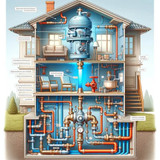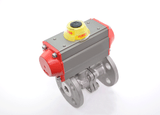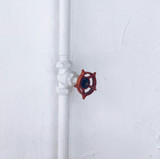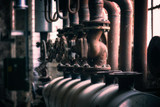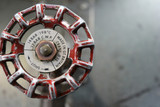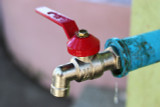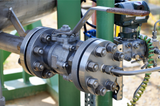Flanged Ball Valves
Replacing or repairing a valve should be a simple task. Unfortunately, we don't live in a perfect world. However, that's not to say that innovation hasn't saved the day from time to time, as it has in the world of plumbing and pipelines. At some point in the history of valves, someone realized that installments needn't be permanent--valves could be removed and repaired or replaced without necessitating damage to an existing line.
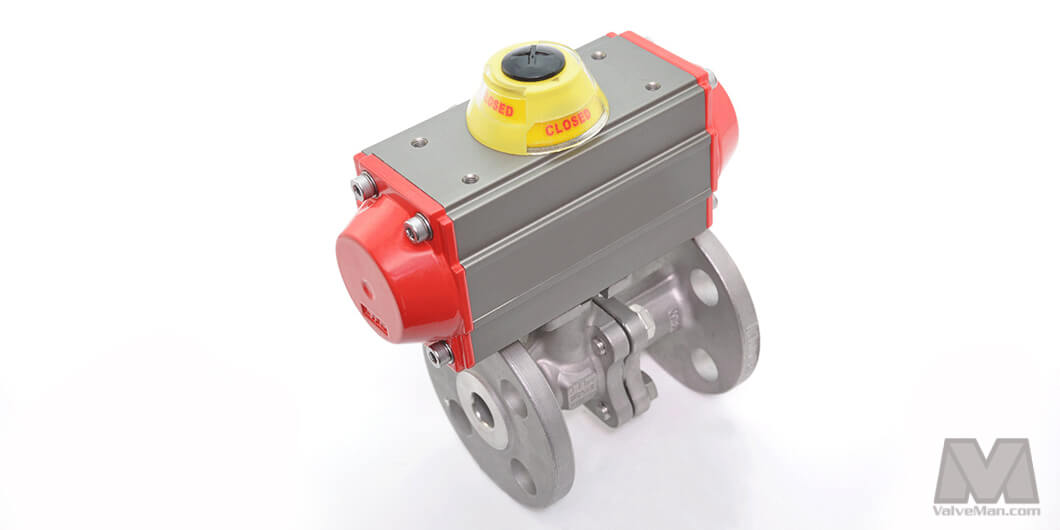
Why Choose Flanged Ball Valves?
The flanged valve is the hero: its special design makes it all possible. A "flange" is an external ridge, or lip, through which bolts are used to secure both ends (inlet/outlet) of a valve to a pipeline, which has matching flanges. This type of valve--often a ball valve--is commonly employed in pipelines utilizing automated flow-control pumps (pneumatic or electric actuators), larger bores and volumes of fluid, and where maintenance requires the removal of the valve.
Flanged ball valves typically range in port sizes between 1/2" and 4", but much larger versions can be seen on major piping systems for water, oil, and natural gas industries. Flanged ball valves are also utilized by industries produce chemicals, food, or work with steam. These pipelines can be very complicated, requiring numerous flow-control devices at varying points, often necessitating an automated actuator. These automated actuators, which act as pumps for controlling fluid delivery, may need service, cleaning, or inspection from time to time. Incorporating a flanged valve--particularly a flanged ball valve--makes this job much easier, and less time consuming, as the entire unit can be removed as one piece. Likewise, a flanged ball valve can be replaced just as quickly.
Another major advantage of a flanged ball valve is that it produces a better seal rate for larger port diameters. Heavier valves complicate stress points for the simple reality of gravity, but there is also increased pressure to consider when pushing large volumes of fluid from one end of a line to another--this complicates the issue of maintaining seal integrity. Because flanged ball valves are bolted in place, stress and torque are accommodated, and seal integrity is maintained.
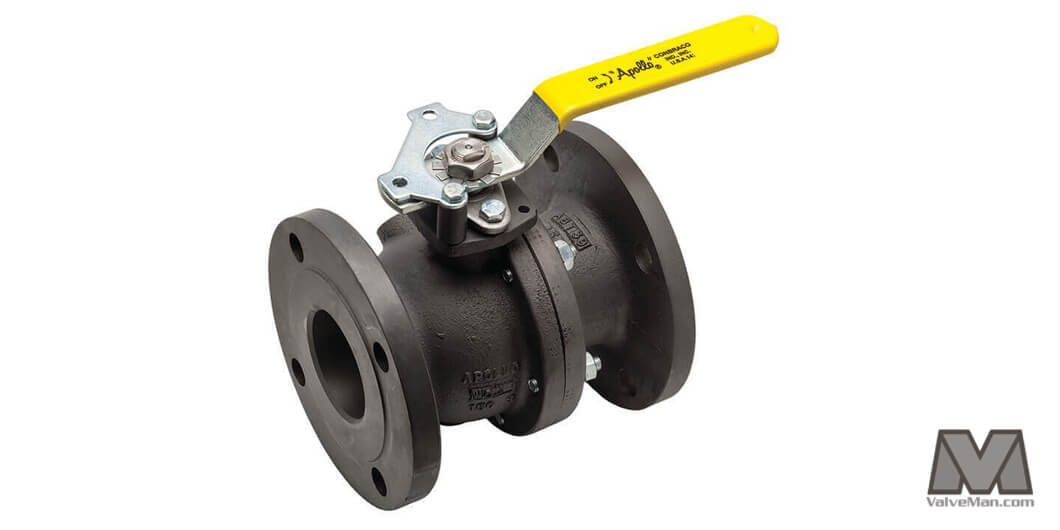
Where to Buy Industrial Grade Flanged Ball Valves
Maintaining a pipeline is a big responsibility. Utilizing top-of-the-line products is the first step toward keeping that responsibility a successful one. That's why the valve store at ValveMan.com sell only the highest quality industrial valves on the market today. We can help you select the best choice for your valve application. We know all about flanged ball valves, and every other type of valve you may need. That's because we've been in the valve business for over 50 years. In fact, all we sell are valves. It's simply what we do, and we do it better than anyone else.
Flanged Ball Valves - Related Articles
Industrial Ball Valves - 9 Questions To Make The Right Choice
Choosing the Perfect Valve End Connection Type: NPT vs Flanged vs Socket Weld
Difference Between a Vented Ball Valve and a Standard Ball Valve
Difference Between a 1, 2, and 3 Piece Valve
What is the Difference Between Full Port and Standard Porting?
Our Posts
View AllTypes of Valves in Plumbing
Have you ever wondered what goes into managing the flow of water in your home, or through a building …
Read MoreIntroducing Apollo Valves
Apollo Valves® inventory includes a wide range of valve products supplied to diverse markets. Th …
Read MoreUnderstanding Valve Sizes and Measurement
Sizing the appropriate valve is critical to ensuring the performance of your system. Whether you'r …
Read MoreTypes of Water Valves
Hey there, fellow valve enthusiasts! We all know that valves play a crucial role in regulating th …
Read MoreWhat is a Backflow Preventer, and How Does it Work?
When a simple check valve is inadequate for the job, you need a backflow preventer. But knowing …
Read MoreValve inspection - main points of valve testing in Manufacture setting
Industrial facilities rely on different types of valves (such as check valves, for example) to con …
Read MoreTypes of Ball Valves
Ball valves are important components in a vast range of systems, from small family-owned workshops …
Read MoreUnderstanding valve standards and specifications
Hey there, fellow valve enthusiasts! Today, we're looking at valve codes, standards and specifica …
Read MoreHow to Tell if a Valve is On or Off
We have all been there before. You are staring at a valve; you know that you should know if it …
Read MoreUnderstanding Different Types of Valve Connections and Fittings
Hey there, fellow valve enthusiasts! We know valves play a crucial role in regulating the flow of li …
Read MoreTypes of Valve Handles: Lever and Handwheels
Whether you're involved in industrial work, plumbing, or you're a DIY enthusiast, you come across va …
Read MoreThe Basic Parts of a Valve
Valves quietly work in many different areas, even places you wouldn't expect. They're truly every …
Read MoreGas Ball Valves In Industrial Applications - 5 Things to Keep in Mind
Unlike the standard ball valves, most gas ball valves are tested and approved by CSA. These valves a …
Read MoreHow To Correctly Use A 3 Way Valve In Different Applications
To understand the "T"-port and an "L"-port 3-way valves and what makes them different, it's importan …
Read MoreIndustrial Ball Valves - 9 Questions To Make The Right Choice
Ball valves are versatile flow control devices suitable for extensive industrial applications. They …
Read MoreEverything you need to know about valve types
Valves play crucial roles in production lines and equipment performance across a multitude of ind …
Read MoreWhat is a Duty Cycle and How Does it Relate to Electric Ball Valves?
Electric actuation improves the efficiency of processes by maintaining the accuracy of the re …
Read MoreActuated Butterfly Valves 101: All You Need To Know About Their Application In Piping Systems
Butterfly valves are quarter-turn flow control or isolation devices, used for quick shut-off in p …
Read MorePractical Guide To Electric and Pneumatic Actuators – Which One To Choose?
While electrical and pneumatic actuators have several unique benefits and are preferred in differ …
Read MoreHow Do Check Valves Affect Water Pressure in the Piping System?
Check valves also known as "one-way" valves are autonomously operated unidirectional valves that all …
Read More



